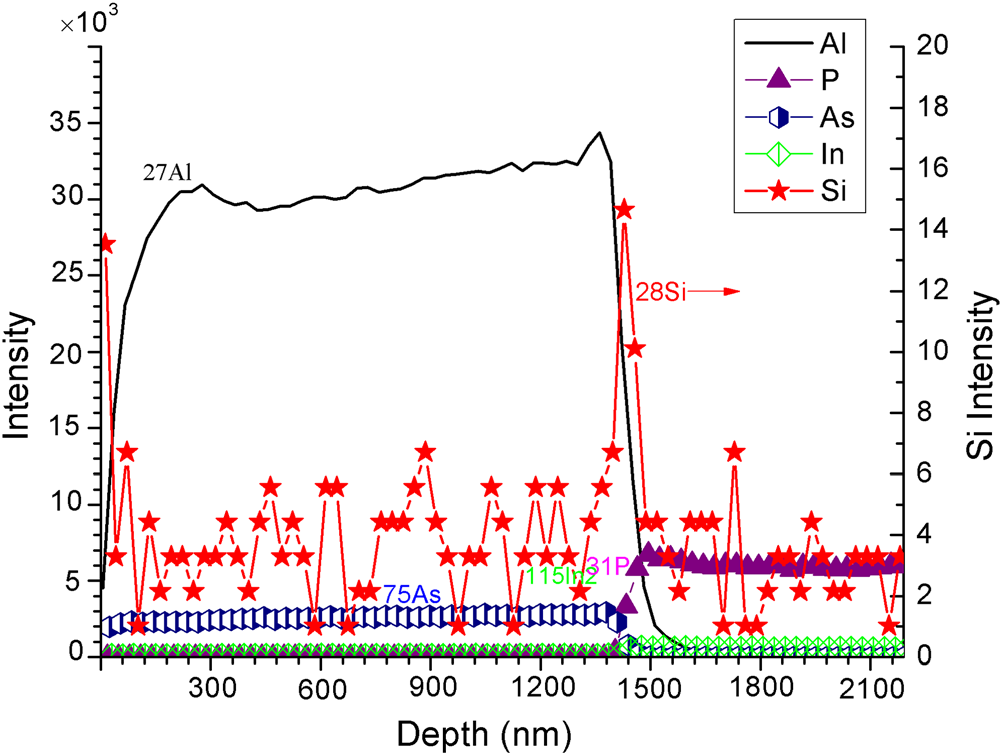InP is an important III-V semiconductor for both electronic and photonic devices due to its good thermal conductivity, high radiation resistance, and high electron saturation mobility. semi-insulating InP single crystals are now widely used as a substrate for the manufacture of high-frequency, high-speed, high-power microwave devices, and optoelectronic integrated circuits, which are indispensable for wireless technology, satellite communications, and high-speed computers.1–4 An n-type conduction layer at the interface between the epitaxially grown layer and the InP substrate is created when Si impurities accumulate on the surface of the InP substrate.5 This conduction layer can add a parasitic capacitance, which is detrimental to high-frequency devices. Surface silicon impurities may exist in mineral and organic form, such as SiO, SiO2, SiCH3, and Si(CH3)3. The silicon concentration before treatment can reach up to 1017–1018 cm 3 , which is equivalent to medium-level doping.
Several papers have reported different techniques to control the silicon impurity layer such as annealing the substrate at a high temperature under phosphine, using an Fe-doped InAlAs buffer layer, using a low-growth temperature InAlAs buffer layer, and using tertiarybutylchloride (TBC1) to cleaning the residual silicon.6–9 However, these methods are not very effective and unsuitable for a practical molecular beam epitaxy (MBE) growth process used in the preparation of high electron mobility transistor and heterojunction bipolar transistor devices.
In order to reduce the impurity concentration and to improve the surface quality of ready-to-use InP substrates, we investigate a wet-chemical cleaning process (WCP), which is an effective and practical method for cleaning semiconductor surfaces. Conventional acidic cleaning processes can meet the requirement for an InP surface that is metal- and particle-free,but it cannot remove some nonmetallic impurities such as silicon, sulfur, and carbon.10 In this paper, we present a novel etching and cleaning process for the InP surface by adding an alkaline (sodium hydroxide) solution to the standard acidic cleaning process and propose the underlying mechanisms for silicon removal.
The samples employed in this study were 2-in. diameter Fe-doped InP wafers with a thickness of about 400 lm, which was sliced from a single crystal ingot grown by the high-pressure liquid encapsulated Czochralski method. The wafers were fifirst prepared by mechanical–chemical polishing to get a damage-free, mirror surface, and then degreased with organic solvents. After this, the wafers were rinsed with deionized water and were divided into three groups, and the wafer cleaning process of each group is illustrated in Table I. All wet-chemical cleaning processes were carried out at room temperature (25 ℃).

Fig1
After all the cleaning procedures, the samples were rinsed with deionized water, blown dry with nitrogen, and encapsulated. TOF-SIMS analysis was carried out with a TOF-SIMS V instrument from ION-TOF. Several types of primary ions are available on this instrument, and we selected the Bi3 þ beam since it has good surface sensitivity and the best image contrast. The primary ion dose is 4 1012 ions/cm3 , and the analytical depth is less than 2 nm into the surface. The surface microroughness measurements were performed by a ContourGTTM-X8 three-dimensional optical profifilers, with a vertical resolving power of less than 0.1 nm.
上一篇: InP 中对准 V 型槽的湿法化学蚀刻
下一篇: 光刻胶回流特性在金刚石微透镜制造中的应用